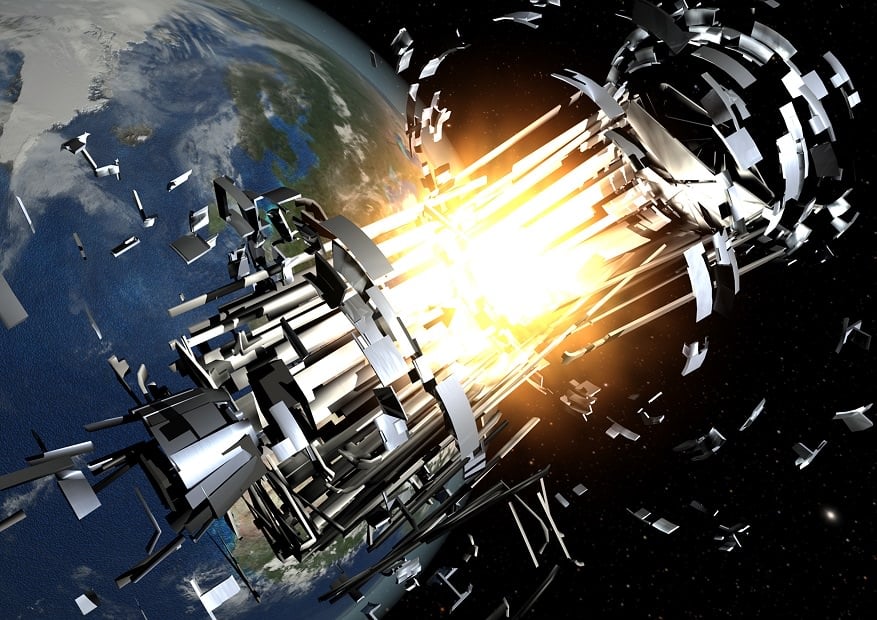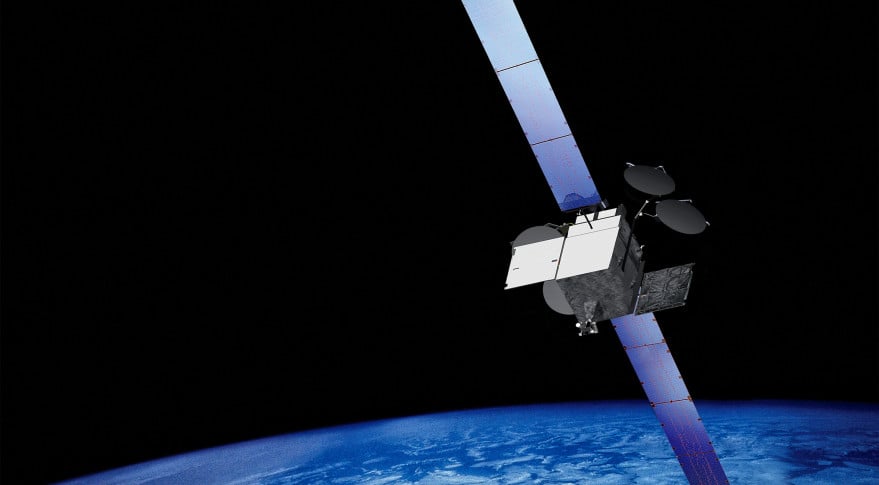On Friday (Jan. 19th), authorities at the Federal Communications Commission (FCC) announced that they had granted permission to cable tv provider DirecTV to begin the process of deorbiting their Spaceway-1 (F1) satellite. This was necessary ever since DirecTV detected a "major anomaly" with the satellite's batteries which increased the risk of an explosion if its orbit remained unchanged.
Launched in 2005, the F1 is a Boeing-manufactured High Power 702 model communication satellite, a 3,600 kg (~8000 lbs) model that broadcasts in the Ka-band of the radio spectrum and has a lifespan of 12 years. Like most communications satellites, it occupies a spot in geostationary orbit and at an altitude of about 36,000 km (mi) above the equator.
The current situation began back in December when DirecTV detected an anomaly that caused significant thermal damage to its batteries. This was of particular concern since the satellite would be passing through Earth's shadow by February 25th, at which point, it would be forced to rely on its batteries rather than its solar panels.
With its batteries dead, the satellite had a much higher chance of colliding with others at this time, a situation made worse by the fact that the F1 still has 73 kg (161 lbs) of propellant onboard. In short, this creates a risk where a collision would result in an explosion, which in turn would scatter debris throughout the geostationary arc - which is densely-populated by satellites.
In response, DirecTV filed with the FCC on Jan. 19th to deorbit the satellite ahead of its planned retirement date. Based on the amount of propellant it still has, the satellite would have been able to operate until 2025. The FCC quickly granted permission to DirecTV's parent company (AT&T) to lift the satellite to a "graveyard orbit" roughly 300 km (186 mi) above the geostationary arc.
As an FCC spokesman explained in a recent statement:
"[B]ecause the SpaceWay-1 satellite is being retired ahead of schedule, it has significantly more propellant remaining than it would have had at its previously scheduled retirement date."
By law, the FCC requires licensed satellite operators to vent propellant before moving their satellites to the graveyard orbit. Unfortunately, it takes between two and three months for similar satellites to vent 73 kg of fuel and the F1 has only a month before it will be in the Earth's shadow. As such, DirecTV has indicated that it will be able to vent no more than "a nominal portion" of the satellite's remaining propellant.
But given the risk of a collision and explosion, the FCC chose to defer on the decision to allow DirecTV to fast-track the "passivating" process, which includes dumping the satellites remaining fuel and discharging its batteries. In the meantime, Boeing has assured the public that the failure that affected F1 is not likely to occur with other satellites in its constellation. As spokesperson Richard Esposito explained in an interview with SpaceNews:
“The battery malfunction occurred in the course of beyond-contract-life operation after a collection of events that have a very low likelihood of occurring on other satellites. To further lessen operators’ risk, Boeing will be providing affected customers with a minor update to operating procedures that will allow them to avoid a similar malfunction going forward.”
AT&T has also assured its customers that the loss of the satellite will not affect services. In addition to being a backup satellite, they claim, the company will be replacing it shortly. What's more, the fact that it was kept in orbit after its 12-year lifespan expired as a backup increased the likelihood that a collision would happen eventually.
As always, this latest development highlights the need for vigilance when it comes to keeping Low Earth Orbit (LEO) uncluttered. And with thousands of more satellites expected to clog the space lanes in the coming years, it also reminds us that imitigation and clean-up strategies are in order!
Further Reading: AFP*, SpaceNews, SpaceNews (2)*
 Universe Today
Universe Today


